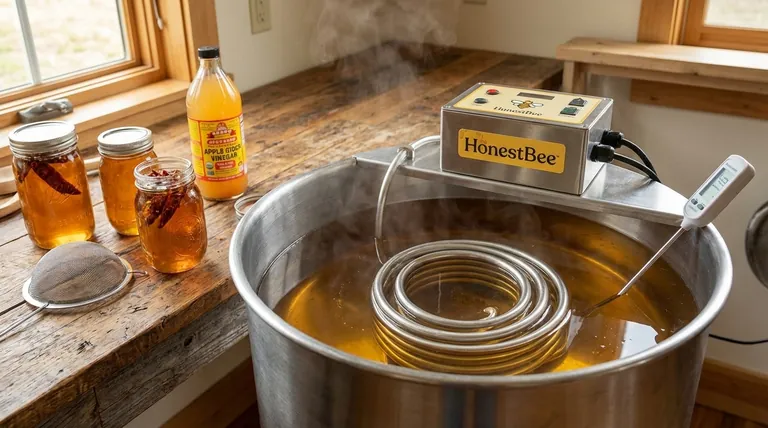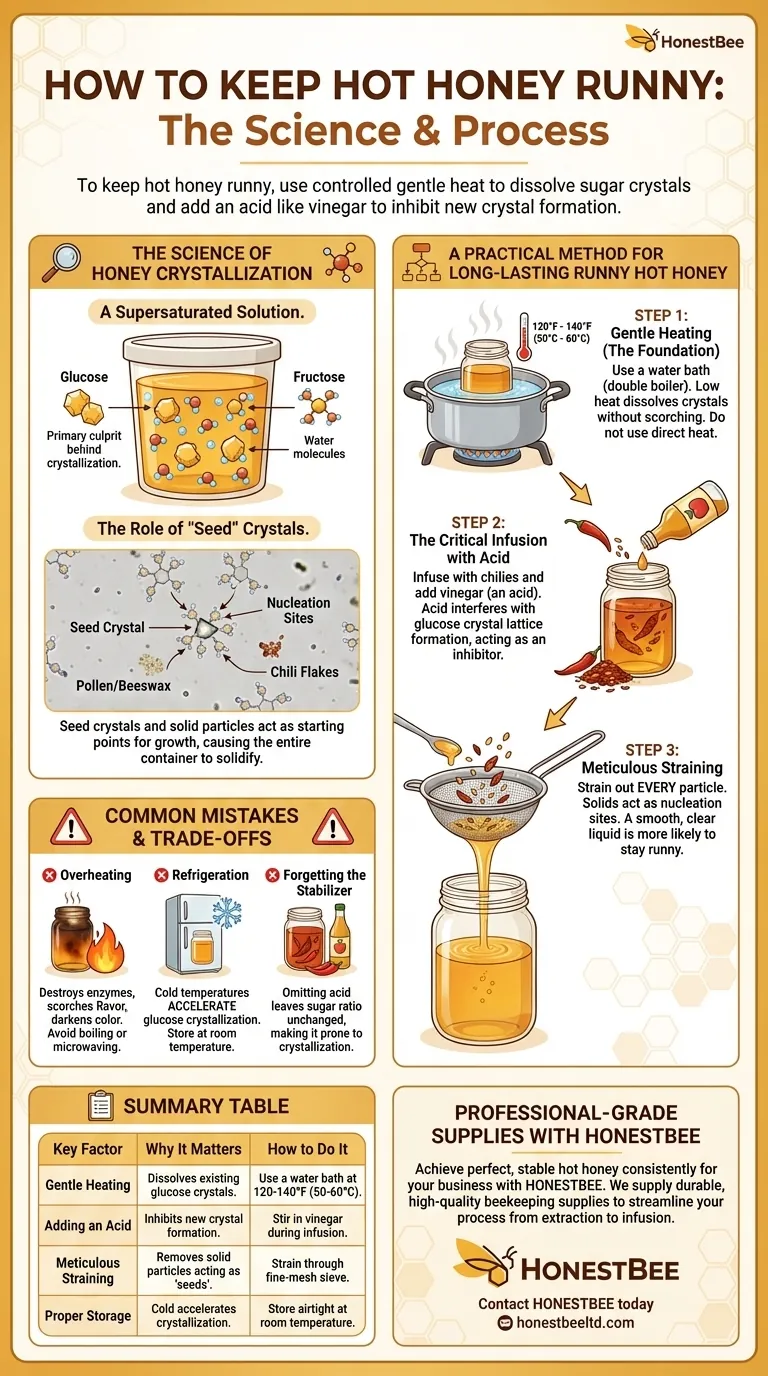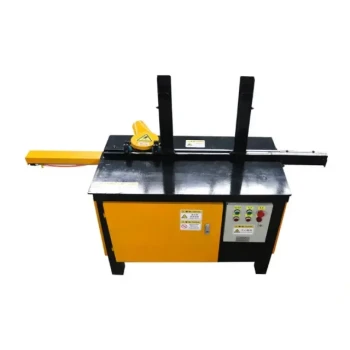To keep hot honey runny, you must use controlled, gentle heat to dissolve the sugar crystals that cause it to solidify and add an ingredient like vinegar that helps inhibit new crystals from forming. The process involves gently heating the honey, infusing it with chilies, adding an acid, and then straining it meticulously to remove any solid particles.
Honey crystallization is a natural process, not a sign of spoilage. The key to preventing it in hot honey is to first dissolve existing glucose "seed" crystals with gentle heat and then disrupt the formation of new ones by adding an acid (like vinegar) and removing all solid infusion particles.

The Science of Honey Crystallization
To effectively solve the problem, you must first understand why it happens. Crystallization is a natural characteristic of honey.
A Supersaturated Solution
Honey is a supersaturated solution, meaning it contains more dissolved sugar than water can naturally hold. This solution is primarily composed of two sugar types: glucose and fructose.
Glucose is the primary culprit behind crystallization. It is less soluble in water than fructose, so it has a natural tendency to separate from the water and form solid crystals.
The Role of "Seed" Crystals
Crystallization doesn't happen all at once. It begins when a few glucose molecules form a tiny "seed" crystal. Other glucose molecules then build upon this seed, causing the crystallization to spread until the entire container becomes solid or grainy.
Any tiny solid particle, like pollen, beeswax, or chili flakes, can act as a nucleation site, giving these seed crystals a perfect place to start growing.
A Practical Method for Long-Lasting Runny Hot Honey
The goal is twofold: melt any existing seed crystals and create an environment where new ones struggle to form. The reference's core principle of heating is correct, but we can refine it for a home kitchen.
Step 1: Gentle Heating (The Foundation)
Gently heating the honey is the most crucial step. This melts any microscopic glucose crystals that are already present, effectively erasing the starting points for crystallization.
Use a water bath (double boiler) on low heat. Never apply direct heat, as this can easily scorch the honey. Aim for a temperature between 120°F and 140°F (about 50°C to 60°C). This is warm enough to dissolve the crystals without degrading the honey's flavor and aroma.
Step 2: The Critical Infusion with Acid
When you infuse the honey with chilies, you are also adding other ingredients. This is your opportunity to stabilize the mixture.
Many successful hot honey recipes include vinegar (like apple cider vinegar). The acidity and extra water content interfere with the formation of the glucose crystal lattice, acting as a powerful inhibitor.
Step 3: Meticulous Straining
After infusing, you must strain out every last bit of chili flake, seed, and solid particle. Use a fine-mesh sieve or cheesecloth.
As we learned, these solids act as nucleation sites. Leaving them in the honey is like leaving a blueprint for crystallization. A perfectly smooth, clear liquid is far more likely to stay runny.
Understanding the Trade-offs and Common Mistakes
Achieving the perfect texture requires avoiding a few common pitfalls that can either accelerate crystallization or ruin the honey.
The Danger of Overheating
While heat is necessary, too much is destructive. Boiling or microwaving honey on high can destroy its delicate enzymes and aromatic compounds. It can also darken the color and create a slightly burnt, caramelized flavor, which you want to avoid.
The Mistake of Refrigeration
It feels intuitive to refrigerate food for preservation, but for honey, this is a critical error. Cold temperatures accelerate the crystallization of glucose.
Always store your finished hot honey in a sealed, airtight container at a stable room temperature and away from direct sunlight.
Forgetting the Stabilizer
Simply infusing chilies in honey and straining is not enough for long-term stability. Omitting the acid (vinegar) or a small amount of water leaves the honey's sugar ratio largely unchanged, making it just as prone to crystallization as it was before.
How to Apply This to Your Project
Your specific approach may vary slightly depending on your primary goal for the hot honey.
- If your primary focus is maximum runniness: Incorporate a small amount of vinegar into your recipe and be absolutely meticulous with your final straining step.
- If your primary focus is preserving raw honey qualities: Use the lowest possible temperature in your water bath (around 110-120°F or 43-50°C) for just long enough to liquefy the honey and infuse the flavors.
- If your primary focus is long-term shelf stability: Heating the mixture to the higher end of the range (around 140°F / 60°C) for a short period will provide the most resistance to crystallization over many months.
By managing heat, ingredients, and storage, you can control the texture of your hot honey and ensure it remains perfectly smooth and pourable.
Summary Table:
| Key Factor | Why It Matters | How to Do It |
|---|---|---|
| Gentle Heating | Dissolves existing glucose crystals that cause hardening. | Use a water bath (double boiler) at 120-140°F (50-60°C). |
| Adding an Acid (e.g., Vinegar) | Inhibits the formation of new sugar crystals. | Stir in a small amount of vinegar during the infusion step. |
| Meticulous Straining | Removes solid particles that act as 'seed' crystals. | Strain through a fine-mesh sieve or cheesecloth after infusing. |
| Proper Storage | Cold temperatures accelerate crystallization. | Store in an airtight container at stable room temperature. |
Create Perfect Hot Honey Consistently with Professional-Grade Supplies
Whether you're a commercial apiary producing infused honey products or a distributor supplying beekeepers, achieving a perfect, stable product is key to customer satisfaction. The right equipment makes all the difference.
HONESTBEE supplies the durable, high-quality beekeeping supplies and equipment you need to streamline your process, from extraction to infusion. Our wholesale-focused operations are designed to support your business's scale and efficiency.
Let us help you enhance your product line and operational reliability.
Contact HONESTBEE today to discuss your specific needs and discover how our products can bring value to your operation.
Visual Guide

Related Products
- Professional Thermostatic Conical Honey Melter
- Honey Concentrating Vacuum Heating Thickening Machine Dehumidifier for Honey
- 10L Stainless Steel Electric Honey Press Machine
- 0.5T Capacity Honey Dehumidifier Dryer with Vacuum Heating and Thickening Filtering Machine
- High Quality Honey Dehumidifier Dryer Thickening Machine for Beekeeping
People Also Ask
- What equipment is commonly used for heating and processing honey? Essential Tools for Every Beekeeper
- How to permanently decrystallize honey? Embrace Its Natural State for Maximum Quality
- What are the negative effects of overheating honey? Preserve Your Honey's Natural Quality
- What is melter honey used for? A Low-Cost Ingredient for Bakers and Brewers
- Why is it important to heat honey slowly and evenly? Preserve Flavor, Nutrients & Value



















